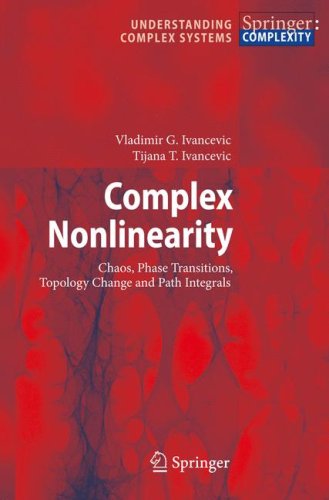

Most ebook files are in PDF format, so you can easily read them using various software such as Foxit Reader or directly on the Google Chrome browser.
Some ebook files are released by publishers in other formats such as .awz, .mobi, .epub, .fb2, etc. You may need to install specific software to read these formats on mobile/PC, such as Calibre.
Please read the tutorial at this link: https://ebookbell.com/faq
We offer FREE conversion to the popular formats you request; however, this may take some time. Therefore, right after payment, please email us, and we will try to provide the service as quickly as possible.
For some exceptional file formats or broken links (if any), please refrain from opening any disputes. Instead, email us first, and we will try to assist within a maximum of 6 hours.
EbookBell Team

4.1
70 reviewsComplex Nonlinearity: Chaos, Phase Transitions, Topology Change and Path Integrals is a book about prediction & control of general nonlinear and chaotic dynamics of high-dimensional complex systems of various physical and non-physical nature and their underpinning geometro-topological change.
The book starts with a textbook-like expose on nonlinear dynamics, attractors and chaos, both temporal and spatio-temporal, including modern techniques of chaos–control. Chapter 2 turns to the edge of chaos, in the form of phase transitions (equilibrium and non-equilibrium, oscillatory, fractal and noise-induced), as well as the related field of synergetics. While the natural stage for linear dynamics comprises of flat, Euclidean geometry (with the corresponding calculation tools from linear algebra and analysis), the natural stage for nonlinear dynamics is curved, Riemannian geometry (with the corresponding tools from nonlinear, tensor algebra and analysis). The extreme nonlinearity – chaos – corresponds to the topology change of this curved geometrical stage, usually called configuration manifold. Chapter 3 elaborates on geometry and topology change in relation with complex nonlinearity and chaos. Chapter 4 develops general nonlinear dynamics, continuous and discrete, deterministic and stochastic, in the unique form of path integrals and their action-amplitude formalism. This most natural framework for representing both phase transitions and topology change starts with Feynman’s sum over histories, to be quickly generalized into the sum over geometries and topologies. The last Chapter puts all the previously developed techniques together and presents the unified form of complex nonlinearity. Here we have chaos, phase transitions, geometrical dynamics and topology change, all working together in the form of path integrals.
The objective of this book is to provide a serious reader with a serious scientific tool that will enable them to actually perform a competitive research in modern complex nonlinearity. It includes a comprehensive bibliography on the subject and a detailed index. Target readership includes all researchers and students of complex nonlinear systems (in physics, mathematics, engineering, chemistry, biology, psychology, sociology, economics, medicine, etc.), working both in industry/clinics and academia.